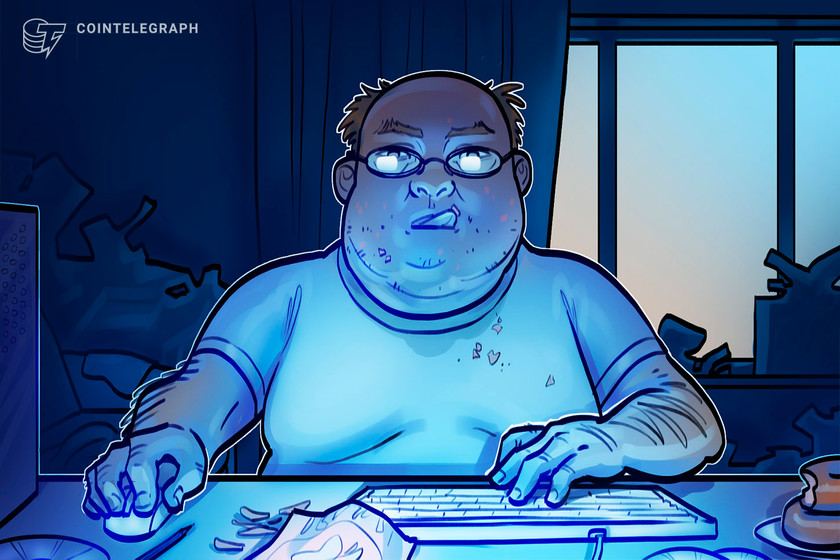
Too many projects are releasing over-hyped trailers that they can’t match with gameplay.
The GameFi industry is set to unleash its massive potential within the next six years. According to Absolute Reports data, its estimated value will grow to $2.8 billion by 2028, with a compound annual growth rate of 20.4% in the same period.
It’s a quieter and perhaps less scandalous branch compared to the more newsworthy centralized finance (CeFi) and decentralized finance (DeFi) spaces, but this hasn’t impacted its force nor its promise. Even in the depth of a bear market, crypto gaming has proven to be the most resilient compared to other market sectors.
However, there is a problem with the GameFi industry: The difference in quality between teaser trailers and delivered products is often stark enough to get under the skin of the eager gamers who put their faith in them. As that becomes the case with more and more titles, the entire industry suffers.
The more that customers’ expectations are unmet and disappointed, the further mass adoption slips further from our reach. Developers must work on what they can actually build, not overpromise and underdeliver. And, we just don’t see that as often as we should.
This pain point is not insignificant. Gaming doesn’t exist in a bubble, but rather it’s increasingly a convergence point where Web2 and Web3 meet and develop innovative ways to integrate one reality with the other. The likes of Animoca Brands went as far as saying that “the gaming industry is closer to a metaverse than any other” and “GameFi could become an onboarding point for metaverse and introduce people to digital ownership.”
Related: Japan is losing its place as the world's gaming capital because of crypto hostility
Well, since GameFi plays such an important role in the advent of Web3, is it too much to ask that it starts protecting its reputation?
The play-to-earn nonfungible token (NFT) game industry is still a relatively nascent one, with no doubt that the future of blockchain-based games holds many exciting AAA titles, but from today’s standpoint, all we see is visually stunning, overdone and inflated teasers that developers just seem to not be able to build.
In theory, it should not be such an uphill battle. At Murasaki of BCG studio, developers have been working on more than 30 mobile game titles, but they always know roughly how long and how much it takes to build each one. It’s not rocket science: if something like Genshin Impact costs $200m to produce and took over two years to build, how can you say you’re working on an AAA title with only $4 million or even $50 million and it’s going to be ready within a few months? It’s just unrealistic.
The standard development and release schedule is the same for everyone: publish a white paper with a clear blueprint of the work developers are setting out to do, release a teaser trailer to ramp up the excitement, raise funds by selling NFTs and tokens for development and, finally, start developing. Somehow, for 90% of GameFi projects, something happens between the trailer release and the development phase that causes games to look amateur-ish and disappointing.
I’m not the only one criticizing Pixelmon and its somewhat depressing NFT drop — one user even tweeted, “Thanks @Pixelmon, worst mint of my life!! I’m quitting NFTs.” When comparing the project roadmap, which had promised “the largest and highest quality game the NFT space has ever seen,” to the actual product Pixelmon released, which looked nothing like the slick demo they’d created anticipation with only a few months prior, it’s easy to see why people would be disappointed.
Think of it like this: it’s like selling the ownership of a building by showing a 1/100 scale mock of the building but omitting how long it’s going to take to build and refusing to say how much money you’re willing to spend along the way. Then, when you finally reveal what you’ve been working on, instead of a skyscraper, it’s a shed.
Related: GameFi developers could be facing big fines and hard time
But, how long can that continue before users get too disillusioned with the space as a whole and end up quitting it before it’s had a chance to reach its full potential?
It may sound harsh, but the simple truth is that if you can’t deliver what you promised, you should let others do it. 99% of developers have been overpromising and under-delivering consistently — they’re making the rest of us honest and eager GameFi enthusiasts look bad and risking our industry’s reputation, and for what?
Such projects should get out of the space entirely and give GameFi a chance to redeem itself before users get tired of the charade. The stakes are too high to let them play with the future of GameFi any longer, or the dream of mass adoption will slip further and further from us and never turn into our reality.
This article is for general information purposes and is not intended to be and should not be taken as legal or investment advice. The views, thoughts, and opinions expressed here are the author’s alone and do not necessarily reflect or represent the views and opinions of Cointelegraph.
via cointelgraph.com


